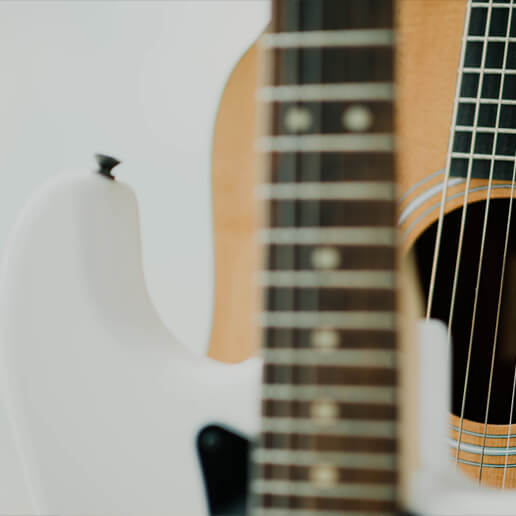JP BLOG
Share this
On the surface, the distinction between chords and chord shapes might not seem that important. However, being able to distinguish the patterns we use from the actual music itself is extremely important in order to gain a deeper understanding of your instrument and the artform as a whole.
Matching Shapes to Theory
First, let’s define just exactly what a chord is. A chord is two or more notes played together. In most popular music, chords are composed of three notes, the root, the third, and the fifth. These chords are called triads, and most chords you’ll encounter in western popular music will be either major or minor triads.
 Other chords such as 7th chords, 9th chords, and sustained chords, all add additional notes to the triad. Power chords can also be called 5 chords and simply omit the third. It’s important to remember that when you’re playing your guitar and fretting all the chord shapes you’ve memorized, you’re not playing those shapes; you’re playing all the notes within those shapes.
Other chords such as 7th chords, 9th chords, and sustained chords, all add additional notes to the triad. Power chords can also be called 5 chords and simply omit the third. It’s important to remember that when you’re playing your guitar and fretting all the chord shapes you’ve memorized, you’re not playing those shapes; you’re playing all the notes within those shapes.
The Magic of Geometry in Music
So why do we think in terms of chord shapes? Why does a D major played open look like an upside down triangle? Why is the C major slanted? Why are barre chords so insanely hard to play? To make playing music easier. Guitarists should always take advantage of chord shapes because the guitar’s fretboard is structured in such a way to turn music into geometry. If you weren’t thinking in shapes you wouldn’t be taking full advantage of your instrument.
Let’s take that D major shape as an example. The note you play with your ring finger within that shape is D, which in D major is the root. Now slide that same shape up two frets, with your ring finger on the fifth fret of the B string. The root is now E, and you’re playing E major. Slide the shape up to the 8th fret and you’re playing Gmajor and so on.
If you combine your knowledge of chord shapes and knowing the function of each finger (and therefore each note) in the chord, then you will have mastered an extremely important part of the guitar. After that there’s not much that will be out of your grasp as a musician. To get started matching the shapes to the theory, check out these lessons on Jamplay.
Ready for more about taking your guitar skills to the next level? Real progress is made in the mind and relies on the beginner mentality. Explore how here.
Join the more than 500,000 guitarists who have experienced JamPlay. Guitar lessons from world class instructor artists in every genre and for every interest to power up your guitar skill. Become a member today at JamPlay.com.

